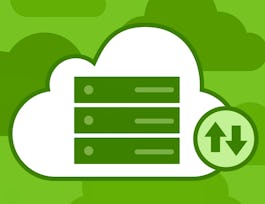Important: The focus of this course is on math - specifically, data-analysis concepts and methods - not on Excel for its own sake. We use Excel to do our calculations, and all math formulas are given as Excel Spreadsheets, but we do not attempt to cover Excel Macros, Visual Basic, Pivot Tables, or other intermediate-to-advanced Excel functionality.


Mastering Data Analysis in Excel
This course is part of Excel to MySQL: Analytic Techniques for Business Specialization
Taught in English
Some content may not be translated


Instructors: Jana Schaich Borg
342,011 already enrolled
Included with 
Course
(3,909 reviews)
93%
Skills you'll gain
Details to know

Add to your LinkedIn profile
14 quizzes
Course
(3,909 reviews)
93%
See how employees at top companies are mastering in-demand skills

Build your subject-matter expertise
- Learn new concepts from industry experts
- Gain a foundational understanding of a subject or tool
- Develop job-relevant skills with hands-on projects
- Earn a shareable career certificate


Earn a career certificate
Add this credential to your LinkedIn profile, resume, or CV
Share it on social media and in your performance review

There are 7 modules in this course
This course will prepare you to design and implement realistic predictive models based on data. In the Final Project (module 6) you will assume the role of a business data analyst for a bank, and develop two different predictive models to determine which applicants for credit cards should be accepted and which rejected. Your first model will focus on minimizing default risk, and your second on maximizing bank profits. The two models should demonstrate to you in a practical, hands-on way the idea that your choice of business metric drives your choice of an optimal model.The second big idea this course seeks to demonstrate is that your data-analysis results cannot and should not aim to eliminate all uncertainty. Your role as a data-analyst is to reduce uncertainty for decision-makers by a financially valuable increment, while quantifying how much uncertainty remains. You will learn to calculate and apply to real-world examples the most important uncertainty measures used in business, including classification error rates, entropy of information, and confidence intervals for linear regression. All the data you need is provided within the course, and all assignments are designed to be done in MS Excel. The course will give you enough practice with Excel to become fluent in its most commonly used business functions, and you’ll be ready to learn any other Excel functionality you might need in future (module 1). The course does not cover Visual Basic or Pivot Tables and you will not need them to complete the assignments. All advanced concepts are demonstrated in individual Excel spreadsheet templates that you can use to answer relevant questions. You will emerge with substantial vocabulary and practical knowledge of how to apply business data analysis methods based on binary classification (module 2), information theory and entropy measures (module 3), and linear regression (module 4 and 5), all using no software tools more complex than Excel.
What's included
2 videos2 readings
In this module, will explore the essential Excel skills to address typical business situations you may encounter in the future. The Excel vocabulary and functions taught throughout this module make it possible for you to understand the additional explanatory Excel spreadsheets that accompany later videos in this course.
What's included
8 videos1 reading2 quizzes
Separating collections into two categories, such as “buy this stock, don’t but that stock” or “target this customer with a special offer, but not that one” is the ultimate goal of most business data-analysis projects. There is a specialized vocabulary of measures for comparing and optimizing the performance of the algorithms used to classify collections into two groups. You will learn how and why to apply these different metrics, including how to calculate the all-important AUC: the area under the Receiver Operating Characteristic (ROC) Curve.
What's included
6 videos1 reading2 quizzes
In this module, you will learn how to calculate and apply the vitally useful uncertainty metric known as “entropy.” In contrast to the more familiar “probability” that represents the uncertainty that a single outcome will occur, “entropy” quantifies the aggregate uncertainty of all possible outcomes. The entropy measure provides the framework for accountability in data-analytic work. Entropy gives you the power to quantify the uncertainty of future outcomes relevant to your business twice: using the best-available estimates before you begin a project, and then again after you have built a predictive model. The difference between the two measures is the Information Gain contributed by your work.
What's included
7 videos1 reading2 quizzes
The Linear Correlation measure is a much richer metric for evaluating associations than is commonly realized. You can use it to quantify how much a linear model reduces uncertainty. When used to forecast future outcomes, it can be converted into a “point estimate” plus a “confidence interval,” or converted into an information gain measure. You will develop a fluent knowledge of these concepts and the many valuable uses to which linear regression is put in business data analysis. This module also teaches how to use the Central Limit Theorem (CLT) to solve practical problems. The two topics are closely related because regression and the CLT both make use of a special family of probability distributions called “Gaussians.” You will learn everything you need to know to work with Gaussians in these and other contexts.
What's included
11 videos1 reading3 quizzes
This module gives you additional valuable concepts and skills related to building high-quality models. As you know, a “model” is a description of a process applied to available data (inputs) that produces an estimate of a future and as yet unknown outcome as output. Very often, models for outputs take the form of a probability distribution. This module covers how to estimate probability distributions from data (a “probability histogram”), and how to describe and generate the most useful probability distributions used by data scientists. It also covers in detail how to develop a binary classification model with parameters optimized to maximize the AUC, and how to apply linear regression models when your input consists of multiple types of data for each event. The module concludes with an explanation of “over-fitting” which is the main reason that apparently good predictive models often fail in real life business settings. We conclude with some tips for how you can avoid over-fitting in you own predictive model for the final project – and in real life.
What's included
4 videos1 reading1 quiz
The final course project is a comprehensive assessment covering all of the course material, and consists of four quizzes and a peer review assignment. For quiz one and quiz two, there are learning points that explain components of the quiz. These learning points will unlock only after you complete the quiz with a passing grade. Before you start, please read through the final project instructions. From past student experience, the final project which includes all the quizzes and peer assessment, takes anywhere from 10-12 hours.
What's included
2 videos3 readings4 quizzes1 peer review
Instructors


Offered by
Recommended if you're interested in Data Analysis

Duke University

Duke University

Duke University

Google Cloud
Why people choose Coursera for their career




Learner reviews
Showing 3 of 3909
3,909 reviews
- 5 stars
56.26%
- 4 stars
24%
- 3 stars
9.13%
- 2 stars
5.32%
- 1 star
5.27%
New to Data Analysis? Start here.

Open new doors with Coursera Plus
Unlimited access to 7,000+ world-class courses, hands-on projects, and job-ready certificate programs - all included in your subscription
Advance your career with an online degree
Earn a degree from world-class universities - 100% online
Join over 3,400 global companies that choose Coursera for Business
Upskill your employees to excel in the digital economy
Frequently asked questions
No. Completion of a Coursera course does not earn you academic credit from Duke; therefore, Duke is not able to provide you with a university transcript. However, your electronic Certificate will be added to your Accomplishments page - from there, you can print your Certificate or add it to your LinkedIn profile.
Access to lectures and assignments depends on your type of enrollment. If you take a course in audit mode, you will be able to see most course materials for free. To access graded assignments and to earn a Certificate, you will need to purchase the Certificate experience, during or after your audit. If you don't see the audit option:
The course may not offer an audit option. You can try a Free Trial instead, or apply for Financial Aid.
The course may offer 'Full Course, No Certificate' instead. This option lets you see all course materials, submit required assessments, and get a final grade. This also means that you will not be able to purchase a Certificate experience.
When you enroll in the course, you get access to all of the courses in the Specialization, and you earn a certificate when you complete the work. Your electronic Certificate will be added to your Accomplishments page - from there, you can print your Certificate or add it to your LinkedIn profile. If you only want to read and view the course content, you can audit the course for free.

